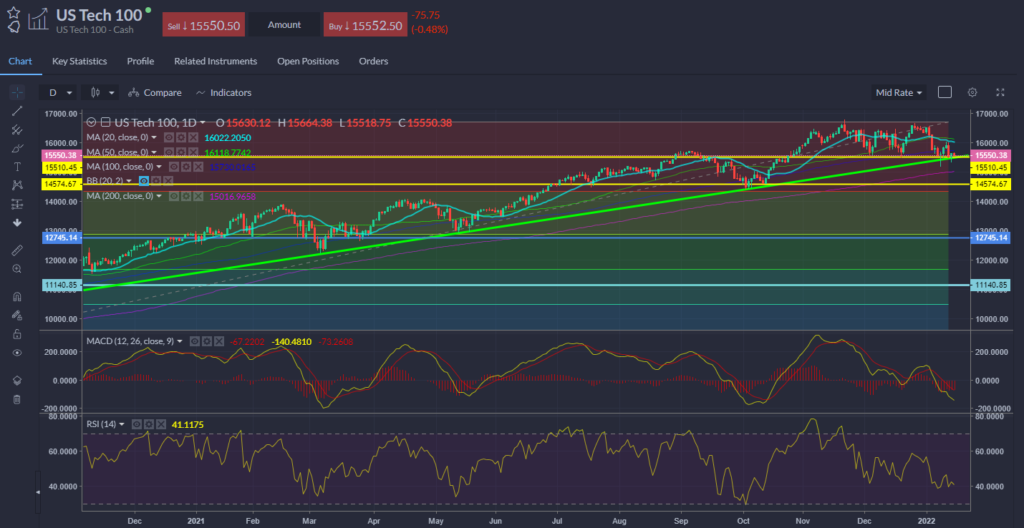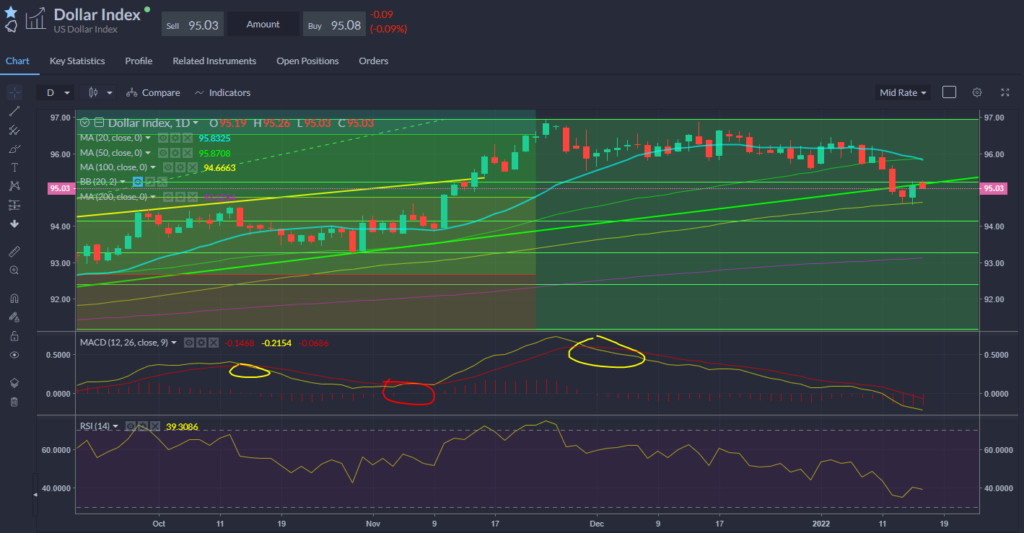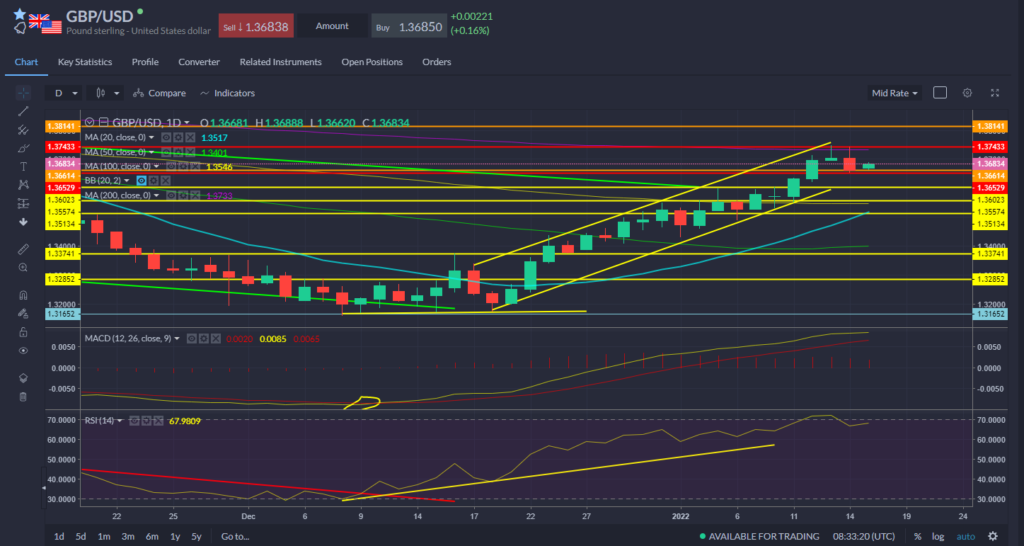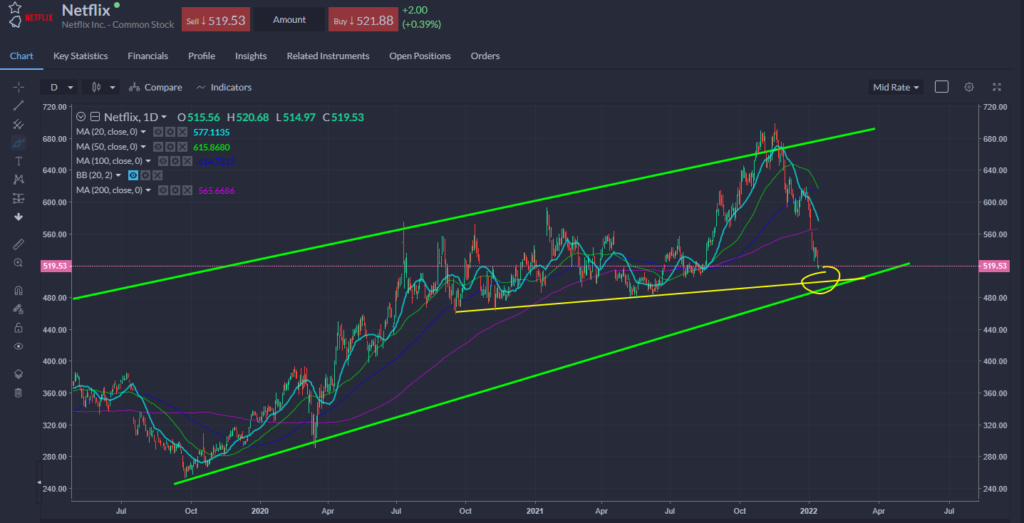
Monday Jan 17 2022 09:38

8 min
On watch: Firstly to geopolitics for a change. The situation regards Ukraine and Russia looks precarious. Increasingly this antebellum escalation has the hallmarks of a brutally choreographed Russian plan to invade. Commons Defence Committee chairman Tobias Ellwood says invasion is ‘inevitable and imminent’. What does this mean for risk? Full scale invasion would be bad, obvs! But would it really dent stocks for long? Hard to see that happening. Oil and European gas markets would be the most obvious candidates for a squeeze. Brent futures are this morning touching on the multi-year highs just above $86, with supply seen tight and demand picking up as Omicron fears wane. A war in Ukraine would send it higher.
In stock markets, the FTSE 100 kicked the week off with another post-pandemic high just under 7,600. European bourses also broadly higher in early trade. MLK day in the US so cash equities will not open but futures remain trading as ever. Overnight data showed China’s economy grew more than expected, but retail sales were weaker. Otherwise data today is light.
Unilever shares dragged on the London market, sliding 6%, on the news it’s bidding for GSK’s consumer unit. GSK shares rose 4%. Unilever wants the attractive cash flow and growth of GSK’s joint venture with Pfizer (4-6% is the aim for the GSK unit, though many think this is a tad ambitious). Unilever CEO Alan Jope is under pressure to grow the business after a lacklustre few years – a megadeal highlights the difficulty is fixing the core business and/or a lack of ideas. Terry Smith – boss of Fundsmith, a top shareholder – says the company has ‘clearly lost the plot’. GSK’s CEO Emma Walmsley is under pressure, too, not least from activist investors, to bolster the firm’s drugs pipeline; a particularly acute concern having missed out on a covid vaccine. Debt may prohibit Unilever from going much higher; the company leveraged itself up after the Kraft-Heinz bid to ward off leveraged buyers…ironic that this could stop it from doing a deal. Other suitors, including private equity, may move in for the kill. Does Unilever want it bad enough? I don’t think so. More pressing things to consider … like the purpose of mayonnaise. Feels like bolting together two rather slow growth consumer staples businesses, which leaves scale/synergies as the key to success … but then you still have all the debt to pay down.
US equity markets are in a bit of a ‘where do we go now’ mood. Banks, which had enjoyed a strong start to 2022 endured some payback on earnings and dragged the Dow Jones lower on Friday, whilst tech rallied. The S&P 500 ended flat – the key level is 4580, the Monday low and close to the 100-day moving average. Until that is hit again you can say we are really just searching for direction. Tested the 38.2% retracement around 4611, which held. Growth took a bit of a pounding but survived – big blow up on Monday before reversing spectacularly, some stabilisation in the mid-week before a steep drop on Thursday again. On Friday the Nasdaq climbed again, led by solid gains for the megacap names, and managed to rise 1% for the week. ARKK down 3% for the week, -17 YTD.
NDX – trend holding but sorely tested.

Yields started the week high at 1.80% for 10s, slid to 1.70% and ended around 1.75%. Back to 1.8% almost this morning.
The dollar fell last week but stabilised on Friday with the dollar index holding at the 100-day SMA. Talk of an imminent short squeeze…not entirely convinced.

GBPUSD reversed right off 1.3750, an old pocket of resistance from Jan 2021. Clear rejection of the 200-day SMA. Seems to be consolidating, but if the dollar short squeeze plays out we could easily see 1.360 tested again.

Was this the message from last week’s big US data releases? Does the Fed hike to cool inflation, or not hike because retail sales are down, indicating weaker demand because of, er, inflation? You can see how the Fed is in a bit of a pickle. That’s because they were too slow in removing all that pandemic accommodation – like they forgot that all the fiscal easing would be a factor this time around, unlike after 2008/09. Jamie Dimon thinks the Fed could hike 6 or 7 times this year. Ok, sure…seems too much, but we don’t actually know where the Fed really stands on all this; nor what inflation will look like in 6-12 months.
Retail sales in the US were soft in December and could have further to fall. The Commerce Department reported Friday that the advance monthly sales report for last month showed a decline of 1.9%. November’s growth was also revised down. Meanwhile, consumer inflation is running at 7% and wholesale inflation is almost 10%. So, people may be buying less because prices are going up faster than their wages and they can’t afford as much stuff as before. Seems simple, underscores the point about price stability being important to the labour market.
UoM 5yr inflation expectations rose to 3.1% from 2.9%, a ten-year high; 1yr expectations rose to 4.9% from 4.8%, equalling the November cycle high. The consumer sentiment part showed a slight decline. So, the message is higher inflation = declining consumer confidence = lower retail sales? I don’t know, looks that way but these things are usually more complicated and the situation is dynamic.
Anyway, this is why inflation above all else is a ‘bad thing’ that central banks are meant to control. You could say the Fed got a bit too focussed on employment – it thought that it could let the genie out a bit and then stuff it back in whenever it wanted. Inflation doesn’t work like that – once out it’s very hard to get back in.
As I noted August 26th 2020:
“I find this idea of AIT [average inflation targeting] being a better anchor for inflation expectations problematic … The fiscal stimulus this time makes it a very different environment.
Layer on top of that the disruption to supply chains and fundamental shift in deglobalisation trends, and you create conditions suitable for inflation to take hold. If the Fed also indicates it does not care if inflation overshoots for a time – indeed is actively encouraging it – there is a risk inflation expectations become unanchored as they did in the early 1970s, which led to a period of stagflation…
My concern would be that once you let the inflation genie out of the bottle it can be hard to put back in without aggressively tightening and likely as not engineering a recession. Nonetheless, this seems to be the way the Fed is going … [The level of inflation] could be more than the Fed wants – the genie is coming out.”
More banks…GS, MS and BAC due to report after Wall Street peers Citigroup, JPMorgan and Wells Fargo got the ball rolling on Friday. Banks mainly fell despite strong numbers; JPM warning it would miss a key profit target in the next two years whilst Citi’s profits declined 26%. Wells Fargo bucked the trend as it said loan demand is picking up. So again, this week look primarily for assessment of 2022 core lending growth as the economy recovers and rates rise. Also – watch for expense growth as banks raise wages…cost cutting helped Wells even though expense growth was quite high. On rates and the Fed and cooling, the average US 30-year fixed mortgage rate rose to 3.45% from 3.22% in the last week, the highest since March 2020. Not enough to worry the housing market but a little reminder that it’s rarely as simple as higher rates = bank stocks go up.
Netflix…as always it’s about subscribers and retention, but also check for foreign language content impacting international growth. Pandemic over but we’re still watching TV – penetration in non-US markets still leaves lots of room to grow. Last quarter they reported 214m subs, which was +4.4m on the prior quarter and +18m on the year ago period. Management has guided +8.5m subs this quarter, analysts expect revenue of $7.7bn and earnings per share of $0.82. Stock is down 13% this year- due a bounce? A weak headline number or weak guide on subs could see the $500 area tested.

